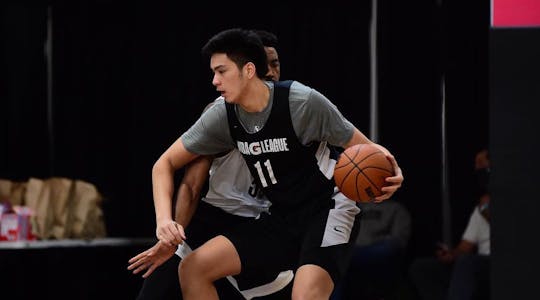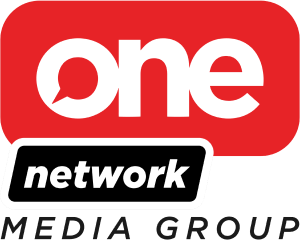There are only 450 roster spots at any given time during the NBA season. In the MLB, that number is at around 840 while the NFL may have around 1700 players in a season, give or take.
It's a monumental achievement for a player to make an NBA roster. The NBA Draft does a lot of great things but it doesn't really highlight the incredible undertaking it is for the majority of NBA aspirants to make it in. We celebrate and speculate about the lottery picks, but we rarely ever get the perspective of the late first-rounders, second-rounders, or even those who go undrafted.
That will most likely be Kai Sotto’s starting point in the NBA. As Filipinos, we’ve been invested in Kai’s journey ever since he made headlines as the 7-foot teenage son of a former PBA player. We've seen him grow both literally and as a person over the last decade - from a fresh-faced kid in Ateneo High School to a grown adult import in Australia with tattoos.
No matter how much we believe in him, Kai’s path to the NBA won’t be as glitzy as other prospects slated to go early in the draft like Chet Holmgren or Jaden Ivey. He’s probably getting picked in the second round, if at all.
The major confusion of a lot of Pinoy fans about the draft and about reading where Kai may go in it comes from the process itself. What does it mean to have a promise from an NBA team? Was it a bad thing that he wasn’t invited to the NBA Combine? What options does Kai really have?
According to Kai’s agent Joel Bell, Kai has drawn a commitment from an NBA team. It hasn’t been exactly easy to track Kai’s basketball journey but he certainly drew eyeballs by playing in Australia’s NBL. Over the years, guys like LaMelo Ball and Josh Giddey have used the NBL as a stepping stone to the NBA. This year is no different as Kai is joined by French big man Ousmane Dieng as prospects to come out of the Australian league, though Dieng is strongly projected to go in the lottery.
Not all NBA teams have scouts looking at the NBL, but some teams have been savvy with picking and rolling the dice on international prospects. Kai certainly draws interest with his 7-foot-3 frame and high basketball IQ.
“Teams that scouted Australia this year, which surprisingly, given the history of Australia sending players to the NBA, is not as extensive as one might imagine, were very enthusiastic about Kai. That’s why we have so many teams that wanna bring him in for workouts,” Bell said.
“And we actually already have commitments from at least one team that said if he stays in the draft, we’ll draft him; we have that already. We’re not sure that’s the right place for him and that’s gonna be a decision Kai and his family, his advisers make at the right time.”
WATCH: Kai Sotto shares pre-NBA Draft updates
With that said, the Draft Combine is less of an issue for Kai. Getting invited to the combine in Chicago itself requires a certain number of NBA teams to request for Kai to go there. If enough teams wanted to see him there, Kai would have gotten an invite. Not getting invited doesn’t mean no team wants him there nor does that mean he won’t get drafted.
“So, if you’re a team that thinks a player is pretty good but you’re not positive other teams realize it, the last thing you’re gonna do is vote for him ‘cause you don’t really want him in a display case,” Bell said.
“And that’s what a lot of people don’t understand about how this stuff works. Now, the teams that have invited Kai, that I’ve spoken to—and I spoke to them during the year, of course—are very enthusiastic about Kai, his potential, what he accomplished this year.”
A lot of Kai’s time between now and the NBA Draft will be spent on a plane and in different NBA teams’ training facilities. Teams will have him, and maybe with a group of other prospects, go through private workouts so they can have their own assessment of a player going into draft night. For a prospect like Kai, any news we hear of him visiting a team’s facility—like recently with the New York Knicks and the Orlando Magic—is good news.
June 13 is the pivotal date for Kai. It’s the deadline for players to pull out of the NBA Draft and explore other options.
If Kai does decide to stay in the draft, he’ll either get drafted in the first round where he gets to sign a two-year NBA rookie contract with a team option for a third and fourth year or in the second round where he has to negotiate with the team that drafts him on the terms and length of his deal.
Going in the second round or going undrafted is filled with uncertainty but it also gives players plenty of flexibility. Kai could swing a deal with a team outright. He could also work out a two-way contract, which is basically a team signing Kai to a G League team with a promise that he gets NBA-level compensation when he gets promoted. He could also opt to play elsewhere overseas with the team that drafted retaining his rights for when he decides to play in the NBA.
Getting Kai’s name called by Adam Silver or, more realistically, Mark Tatum would be a momentous time for all Filipino hoops fans. But getting drafted at all shouldn’t be Kai’s only priority. Getting to the NBA and having a long career often depends more on finding the right situation for a player. Guys like Patrick Beverley and PJ Tucker didn’t have a straight path to NBA careers they're enjoying now. They got better elsewhere and eventually the right time came when an NBA team needed their specific skill set.
That should be the biggest thing weighing on Kai’s mind. Getting drafted is great. But finding a way to get better every year to eventually become a veteran should be the realistic goal. This type of opportunity won’t be provided by all 30 NBA teams. Kai will have to find it.




